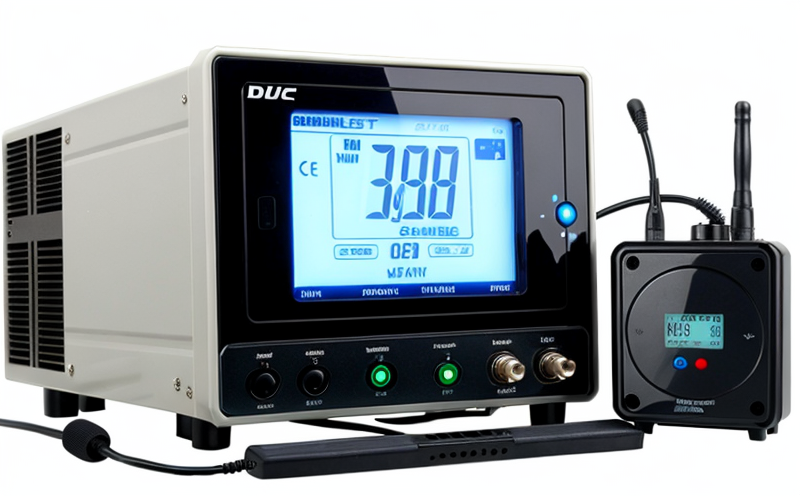RTCA DO 160 Section 26 High Intensity Radiated Field RF Testing
The Radio Technical Commission for Aeronautics (RTCA) DO-160G is a well-established standard that ensures the reliability and performance of electronic equipment used in harsh environments, particularly within the aerospace sector. Section 26 specifically addresses high-intensity radiated field (HIRF) testing, which evaluates an aircraft's electronics for their ability to withstand electromagnetic interference (EMI). This test is critical as it ensures that avionics systems are not adversely affected by strong external RF signals.
The HIRF test involves subjecting the electronic equipment under test (EUT) to controlled, high-intensity electromagnetic fields. These fields simulate the potential exposure an aircraft's electronics might encounter during flight, especially in regions with dense RF emissions such as airports or proximity to military operations. The goal is to ensure that the EUT remains functional and performs its intended role without any performance degradation.
HIRF testing falls under the broader category of electromagnetic compatibility (EMC) assessments. EMC ensures that electrical devices function correctly when subjected to various levels of electromagnetic interference. In aviation, ensuring EMC is particularly crucial because malfunctioning electronics could lead to critical safety issues. The HIRF test specifically addresses the risk of interference from strong RF signals and aims to mitigate potential disruptions in avionics performance.
The testing procedure typically involves placing the EUT inside a Faraday cage within an HIRF test chamber. This setup allows controlled emission of high-intensity RF fields, which are then measured using specialized equipment such as spectrum analyzers and field strength meters. The test is conducted at various frequencies to simulate different environmental conditions that the aircraft may encounter.
For the testing process, it's essential to follow specific preparation steps for the EUT. This includes ensuring that all components of the system are correctly connected and that any external devices that could influence the outcome are accounted for. The test parameters should be carefully defined based on the RTCA DO-160G standards, which include pre-test checks, exposure levels, and duration.
After the testing is completed, detailed reports are generated, summarizing the results of the HIRF tests. These reports provide insights into the performance of the EUT under high-intensity RF fields. The report typically includes data on signal strength, any observed degradation in performance, and recommendations for improvements if necessary.
The importance of HIRF testing cannot be overstated, especially in critical sectors like aerospace where system reliability is paramount. By adhering to RTCA DO-160G standards, manufacturers can ensure that their products are robust enough to withstand the harsh electromagnetic environments they will encounter during operational use.
Why It Matters
The importance of HIRF testing cannot be understated in the aerospace industry. Given the high stakes involved with aviation safety and reliability, any interference from external RF signals could lead to critical system failures. This is especially true for avionics systems that control navigation, communication, and other crucial functions.
- Prevent System Failures: HIRF testing ensures that electronic components within aircraft can withstand strong electromagnetic fields without failing. This reduces the risk of in-flight malfunctions due to interference.
- Enhance Safety: By ensuring that avionics systems are robust against EMI, HIRF testing contributes significantly to aviation safety standards. Reliable electronics mean fewer incidents and accidents.
- Airworthiness Compliance: Adhering to RTCA DO-160G is essential for aerospace manufacturers to achieve airworthiness certification. This ensures that the aircraft meets all necessary regulatory requirements and can be safely operated.
- Longevity of Equipment: HIRF testing helps in identifying potential weaknesses in electronic components, allowing manufacturers to address these issues before mass production begins. This ultimately leads to more durable equipment with a longer operational lifespan.
In summary, HIRF testing is not just about meeting regulatory standards; it's about ensuring the safety and reliability of avionics systems. By conducting thorough testing in controlled environments, manufacturers can prevent potential hazards that could arise from external RF interference during flight.
Scope and Methodology
The scope of RTCA DO-160 Section 26 HIRF testing is extensive, covering a wide range of electronic equipment used in aviation. This includes but is not limited to radios, navigation systems, communication devices, and other avionics components that are critical for aircraft operation.
HIRF testing typically involves placing the EUT inside an electromagnetic interference chamber. The chamber is designed to generate controlled high-intensity RF fields across a specified frequency range. This range usually spans from 10 MHz to 40 GHz, covering most of the relevant frequencies that aviation electronics might encounter.
The methodology for HIRF testing includes several key steps:
- Preparation: The EUT is thoroughly prepared by connecting all necessary components and ensuring that it meets all pre-test requirements as per RTCA DO-160G.
- Field Generation: The HIRF chamber generates controlled RF fields at various strengths and frequencies. The test parameters are carefully defined to simulate real-world conditions the aircraft might encounter.
- Testing: During this phase, the EUT is exposed to high-intensity RF signals for a specified duration. Observations are made on the performance of the equipment under these conditions.
- Data Collection and Analysis: Detailed data from the tests are collected using specialized measurement instruments. This includes signal strength levels, any observed degradation in system performance, and other relevant metrics.
- Reporting: After testing is completed, comprehensive reports are generated summarizing the results. These reports form part of the certification documentation required for airworthiness compliance.
The methodology ensures that the EUT undergoes rigorous scrutiny to identify any potential vulnerabilities to RF interference. By following this structured approach, aerospace manufacturers can ensure their products meet stringent safety and performance standards.





